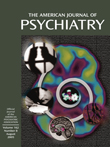Medication Development for Addictive Disorders: The State of the Science
Abstract
In 1989, the National Institute on Drug Abuse (NIDA) established its Medications Development Program. This program has concentrated on developing pharmacotherapies for opiate and cocaine dependence and, more recently, for methamphetamine and cannabis dependence. The major goals of this program are to optimize existing treatments and to expand treatment options for physicians and patients. This review will concentrate on the development of pharmacotherapies for the following substance abuse disorders: opiate, cocaine, methamphetamine, and cannabis dependence. Left untreated, opiate and stimulant dependence are responsible for significant morbidity and mortality. For example, use of illicit opiates is associated with an increased risk of hepatitis C infection, HIV infection, and other medical consequences, e.g., an overdose. The NIDA Medications Development Program has had success in developing, with pharmaceutical partners, levomethadyl acetate, buprenorphine, and buprenorphine/naloxone for opiate dependence. Moreover, several marketed medications have shown promise in reducing cocaine use. Of interest, these medications likely operate through diverse neurochemical mechanisms, suggesting that combination therapy may be a rational next step that could increase treatment gains further in cocaine-dependent patients. The Medications Development Program has also identified multiple neuronal mechanisms that are altered by chronic administration of drugs of abuse. Advances in neuroscience have identified changes in conditioned cueing, drug priming, stress-induced increases in drug intake, and reduced frontal inhibitory mechanisms as all being possible for the development of, maintenance of, and possible relapse to, addiction. Potential medications that modulate these mechanisms are highlighted.



